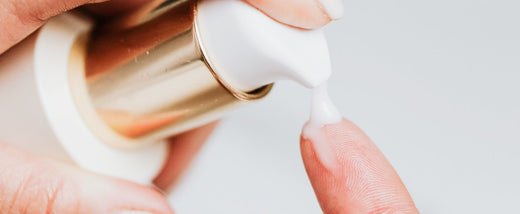The Skin as a Barrier
When you take a bath or go swimming, do you emerge bloated with water that’s absorbed through your pores? Of course not—you stay protected and intact due to the brilliance of your biggest organ: your skin.
Maybe it’s because we’ve got high hopes, but we seem to cast that knowledge aside when we shop for topical skincare. Logically, we know our skin is a barrier that lets almost nothing in. But shrewd beauty marketing manages to make us forget this fact, convincing us that we can soak up the benefits of topical treatments. However, skin is very good at its job and keeps most ingredients out, especially emulsions blended with water like serums, lotions, and masks.
When Topicals Meet the Skin Barrier
To break it down further, topical skincare is limited by molecular weight, which is measured in daltons (Da). Compounds larger than 500 Da do not penetrate skin at all, which means many helpful actives cannot be delivered topically. Current alternatives include injections and other systemic delivery methods, which can be painful, untargeted, and result in potentially dangerous side effects.
Our “Breakthrough” Skincare Technology
But before you trash all your topicals, there are some that can still have a place in your routine. Occlusive moisturizers (such as petroleum jelly) create even more of a barrier on top of the skin, which helps it stay hydrated and youthful looking by locking in existing moisture. Similarly, moisturizers with oils and ceramides soothe skin by making sure water doesn’t escape, which is beneficial. But prevention is all that topical skincare can achieve; without a pathway through the skin barrier, it can’t deliver anything new.
That’s where Droplette comes in. A much-needed advancement in cosmetics, Droplette allows for painless delivery of several classes of molecules—including retinols, collagen, and alpha and beta hydroxy acids—deep into skin over a large surface area via mist. (Not to mention its potential medical applications for delivering antibiotics, steroids, and even chemotherapeutics.)


